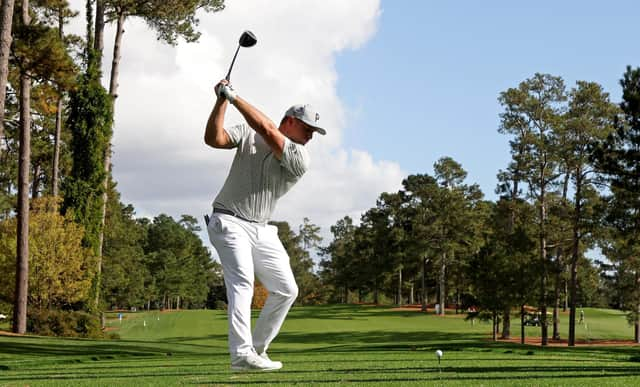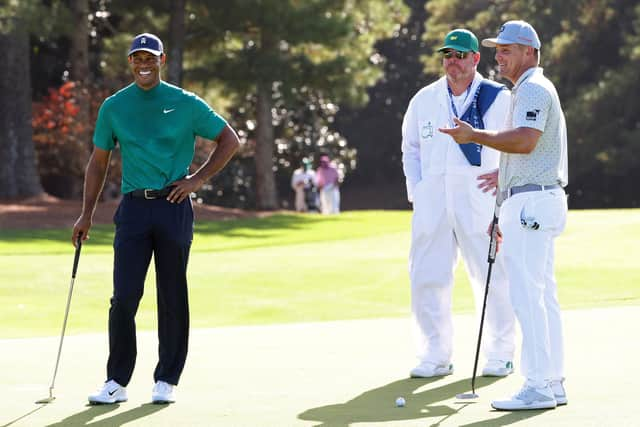Masters: Bryson DeChambeau set for 'one last push' with 48-inch driver


Sandy Lyle, the 1988 winner and sole Scot in the field this year, played a practice round with DeChambeau in the build up to the rescheduled major and reported astonishing details regarding clubs the American used for some of his approach shots.
At the 445-yard par-4 first, he only had a sand wedge in his hand before reducing the par-5 second - the longest hole on the course at 575 yards - to a drive and 8-iron.
Advertisement
Hide AdAdvertisement
Hide AdHe was over the back of the green at the third - a 350-yard par-4 - with a 3-wood off the tee; was up in two at the 570-yard par-5 eighth with a 7-iron and only needed a sand wedge again at the ninth, a par-4 measuring 460 yards.


On the back nine, DeChambeau went in with a pitching wedge at the 495-yard par-4 tenth then had just a 9-iron at the next, a par-4 that is one of the toughest holes on the course at just over 500 yards.
Even with a 3-wood off the tee, he only needed a 7-iron at the par-5 13th then a 9-iron at the 15th - the other par-5 coming home - before a sand wedge was all that was required again at the 17th.
DeChambeau has been trying to dial in a nw 48-inch driver since his impressive six-shot victory in the US Open at Winged Foot last month, but he’s still to decide if it will go in his bag for Thursday’s opening round.
“I’ve got one last push for it,” he told golf.com. “This is not just an easy, put it in the bag and go forward with it. This is very complicated stuff. This is not run of the mill, put the same flex in and just a little longer.
“No, no, no. It’s way more complicated than that, unfortunately. I didn’t think it was going to be complicated - that’s why I thought I would be able to do it this week.
“Personally, I thought it would be a lot easier than it was. We’ve gotten really close. It’s something where I’ve got to figure out if it is to truly benefit me this week. If it doesn’t, not a big deal.
“I’ve been down plenty of rabbit holes that haven’t worked. But there may be a point in time where it does work. It will be fun if we can gain 5-6 miles per hour out of it. It’s not there yet, but it may come out this week.”
Advertisement
Hide AdAdvertisement
Hide AdDeChambeau was speaking before heading out for a practice round with defending champion Tiger Woods, 1992 winner Fred Couples and Justin Thomas.
“There’s a few new angles,” admitted DeChambeau of how the holes are likely to play for him this week. “No 2 for me is something a little different as I’ve got a 7-iron if the wind is right.
“It’s a little different, a little unique. But, for me, I think it’s a fun experiment for me to try and figure out.”
A message from the Editor:Thank you for reading this article. We're more reliant on your support than ever as the shift in consumer habits brought about by coronavirus impacts our advertisers.
If you haven't already, please consider supporting our trusted, fact-checked journalism by taking out a digital subscription.
Comments
Want to join the conversation? Please or to comment on this article.